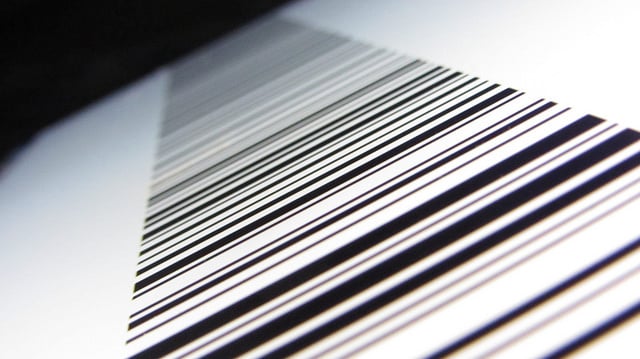Starting a food business can be exciting, but it comes with its own set of challenges. One critical step in bringing your food products to market is obtaining barcodes. Food manufacturers often wonder whether or not they need one for their product and how to obtain one if they do. Barcodes are essential for tracking inventory, managing sales, and ensuring your products are scan-ready for retailers. Here’s a step-by-step guide on how to get barcodes for your food products, whether you’re a food manufacturer, co-packer, or distributor.
Barcode Basics for Food Manufacturers
You may be interested to know that the government doesn’t require you to have a universal product code (UPC-A) barcode on your food product. When I first learned that, I was really surprised because most food products do indeed have barcodes.
Distributors and retail establishments, however, require that all products have barcodes. After all, distributors use barcodes in their warehouse systems, and retail establishments such as grocery stores need them in order to keep track of sales, inventory, and reordering. It’s therefore important that you have a barcode if you plan on getting your product on retail shelves and growing your business.
The number of barcodes you need corresponds to the number of unique products you have. Keep in mind that having one product with several variations (i.e. potato chips in four different flavors) means you need separate barcodes for each flavor. Also, you will need distinct barcodes for one product if it comes in different package sizes. For example, you will need two barcodes for chips that come in either single serving or family size bags.
Why Do You Need Barcodes?
Barcodes for your food products are crucial for several reasons, including:
- Inventory Management – Aids in tracking stock levels and managing inventory.
- Sales Tracking – Simplifies the sales process and helps in tracking product performance.
- Retail Requirements – Most retailers require products to have barcodes for easy scanning at checkout.
- Compliance – Ensures compliance with industry standards and facilitates smooth operations in the supply chain.
How to Get Barcodes for Your Food Products Quickly and Affordably
The most common type of barcodes for retail products are UPC (Universal Product Code) and EAN (European Article Number). UPC codes are widely used in the United States, while EAN codes are more common internationally.
1. Register with GS1
GS1 is the global standards organization for barcodes. Here’s how you can register:
- Create an Account on the GS1 website: Sign up and provide necessary business information.
- Purchase a GS1 Company Prefix: This prefix will be the foundation of all your product barcodes.
2. Assign Product Numbers
Once you have your GS1 Company Prefix, you can start assigning unique numbers to each of your products. These numbers will form the basis of your barcodes.
3. Generate Barcodes
With your product numbers assigned, you can now generate barcodes. For busy food manufacturers and distributors, the easiest way to obtain barcodes for your product is to use an online company that professionally creates barcodes. They will take care of all the work for you and you’ll have your barcodes before you know it. In fact, some online barcode companies, like Simply Barcodes, typically have a turnaround time of only an hour. This means you’ll have more time to spend on other parts of your business, like creating your nutrition label.
4. Verify and Test Your Barcodes
Before printing your barcodes on product packaging, it’s essential to verify them. GS1 provides verification services to ensure your barcodes meet industry standards. Additionally, test your barcodes with barcode scanners to ensure they work correctly.
5. Print and Apply Barcodes To Your Food Products
Once verified, you can print your barcodes on your product labels or packaging. Ensure the barcodes are printed clearly and are easily scannable.
Streamlining Your Label Creation Process
There are a lot of steps that go into creating the label for your food product, and purchasing the barcode is just one of them. Creating your nutrition facts panel is another important part of getting your food product ready to sell. Like barcodes, nutrition facts panels are generally required if you want to sell your product in retail locations.
Creating your nutrition facts panel doesn’t have to be a long and complicated process either. Using an online nutrition analysis software to generate the nutrition facts panel, ingredient list, and allergen warning for your product is almost as quick and easy as purchasing a barcode. With software like LabelCalc, you can complete your nutrition label in a few minutes. All you have to do is:
- Create an account.
- Enter your recipe and serving size using the USDA-compiled database of ingredients.
- Edit your ingredient list and allergen statement.
- Choose a label format that suits your package.
- Download and print your label, then include it in your package design.
About LabelCalc
LabelCalc, a Datacor company, is used by food manufacturers worldwide to generate accurate nutrition facts labels quickly and easily. Within just a few mouse clicks, the intuitive and user-friendly software compiles relevant information about ingredients, nutrition information, serving sizes, and allergens – all correctly formatted and compliant with the latest FDA rules. Not only is it proven to save a lot of time, but there’s also no need to worry about any calculations or math behind the scenes – LabelCalc does all the hard work for you!
If you have any questions about our trusted software solution, email Tracy Herb, Product Owner – LabelCalc, at tlherb@datacor.com. To get a quote or request a demo, visit https://labelcalc.com/contact-us/.

